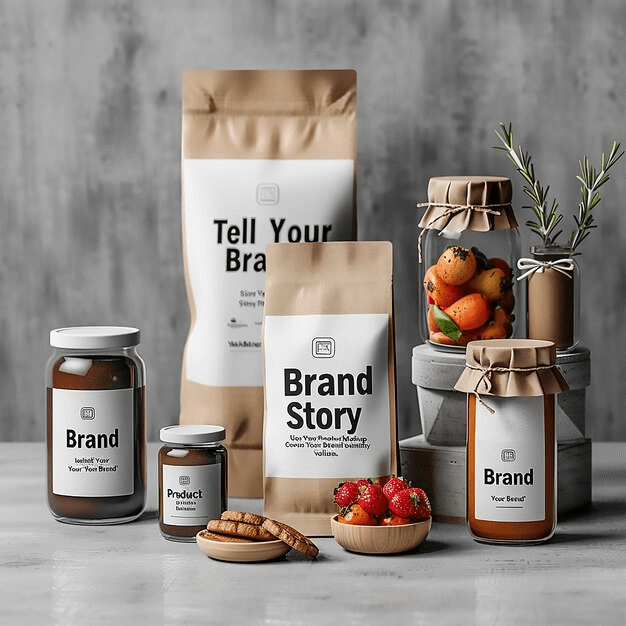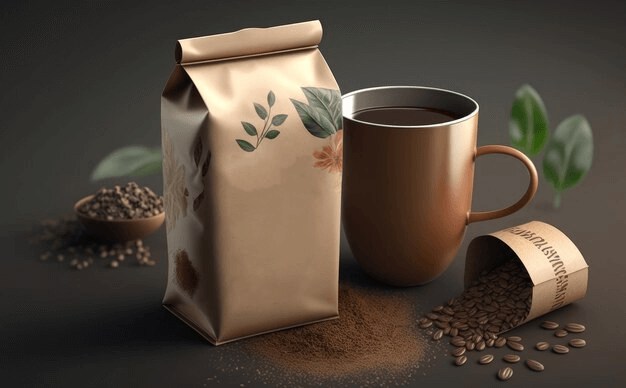Table of Contents

Brewing Success: Master the Art of Coffee Packaging for E-commerce in 2024
Introduction
Selecting optimal “coffee packaging for e-commerce” is crucial when selling coffee online, ensuring that each customer receives their purchase in pristine condition. This comprehensive guide delves into best practices for “coffee packaging for e-commerce,”
Highlighting how strategic packaging choices can not only preserve the quality of the coffee but also enhance customer satisfaction from roastery to cup.
Essential Features of Coffee Packaging for E-commerce
Effective “coffee packaging for e-commerce” must prioritize several key features to ensure product integrity upon delivery. Barrier Protection (BP) is critical,
It involves materials that prevent the ingress of moisture, oxygen, and light—all of which can rapidly degrade coffee quality. Materials such as aluminum foil and multi-layer laminates are commonly utilized for their superior protective qualities.
Further information on material choices and their benefits can be explored through Packaging Digest, which offers insights into the latest innovations in packaging materials.
Airtight Seals (AS) are essential for maintaining the coffee’s freshness and aroma. Technologies such as zip locks and one-way degassing valves, which allow gases emitted by fresh coffee to escape without letting air in, are standard in “coffee packaging for e-commerce.”
The National Coffee Association provides resources on the best practices for coffee packaging.
Sustainability in Coffee Packaging
As environmental concerns grow, the importance of sustainable practices in “coffee packaging for e-commerce” becomes increasingly paramount.
The shift towards bioplastics, recycled materials, and plant-based packaging solutions reflects a brand’s commitment to environmental stewardship.
The Environmental Protection Agency provides guidelines and insights on sustainable packaging practices that help businesses make environmentally friendly choices.

Innovative Packaging Solutions
The “coffee packaging for e-commerce” sector is witnessing significant innovations, particularly with the introduction of biodegradable and recyclable materials. Innovations such as PLA (polylactic acid) linings.
Derived from fermented plant starch, offer a viable compostable alternative without compromising barrier quality. Additionally, advancements in packaging technology are facilitating the use of smarter packaging that can extend shelf life and enhance user experience.
The Packaging Innovation platform discusses various innovative packaging solutions making waves in the industry.
Regulations and Standards
Understanding and complying with regulations, such as those enforced by the FDA (Food and Drug Administration), is crucial for ensuring that “coffee packaging for e-commerce” is safe for food contact.
These regulations help maintain high standards of quality and safety, reassuring customers about the products they consume. The FDA’s official site provides comprehensive information on packaging regulations affecting the food industry.
Consumer Preferences and Market Trends
The dynamic nature of consumer preferences makes understanding market trends essential for businesses involved in “coffee packaging for e-commerce.” With nearly 30% of online shoppers considering packaging design when making a purchase decision.
The demand for innovative and visually appealing packaging is at an all-time high. Mintel, a leading market analysis firm, regularly publishes reports on consumer trends and preferences in packaging.
Logistical Considerations
The practicality of “coffee packaging for e-commerce” during transit is a critical aspect. Packaging solutions must be robust enough to protect the product from physical damage while being cost-effective and efficient.
Strategies for optimizing packaging logistics can be found on Logistics Management, which offers articles and case studies on effective shipping and handling techniques.
Future Trends in Coffee Packaging
The future of “coffee packaging for e-commerce” is likely to see even greater integration of technology, including the use of AR and IoT to create interactive and informative packaging.
These technologies can provide consumers with enhanced product insights and an improved unboxing experience, setting new standards in the industry.
Innovations in these areas are regularly covered by publications like Wired, which discusses the latest technological trends and their applications in various industries, including packaging.
Design Innovations
Recent design innovations in “coffee packaging for e-commerce” also focus on user convenience and reusability. Features like resealable closures, built-in measuring tools, and collapsible bags not only enhance the functionality but also add a wow factor to the packaging.
The Design Institute of America provides examples and case studies of outstanding packaging designs that have revolutionized product categories, including coffee.
Brand Differentiation through Packaging
In a crowded e-commerce marketplace, coffee brands increasingly rely on distinctive packaging designs to set themselves apart. Custom graphics, unique shapes, and interactive elements can make a significant impact on brand recognition and consumer recall.
Insights into how packaging influences brand perception can be found in the American Marketing Association’s publications.
Global Influences on Coffee Packaging
Coffee packaging trends are also influenced by global market dynamics. European and Asian markets, for example, often introduce unique packaging styles and materials that set new benchmarks for sustainability and design.
Observing these global trends can provide valuable insights for U.S.-based e-commerce businesses looking to differentiate their offerings. International case studies and examples are featured in global trade magazines like Packaging World.
Customer Case Studies
Examining successful case studies of “coffee packaging for e-commerce” can provide practical insights and inspire new ideas. Companies like Blue Bottle and Stumptown have pioneered innovative packaging solutions that not only meet functional and aesthetic needs but also resonate with their brand ethos.
Detailed analyses of these and other success stories can help e-commerce businesses understand what works and what doesn’t in the dynamic online marketplace.

Conclusion
As the e-commerce sector evolves, so too must the approach to “coffee packaging for e-commerce.” By staying informed about the latest materials, technologies, consumer preferences, and regulatory requirements.
Coffee vendors can ensure their products stand out in a crowded marketplace. Embracing innovation and sustainability will not only appeal to environmentally conscious consumers but also contribute to a brand’s reputation for quality and responsibility.
If You want to read more article related to Jobs Or Investments You can go to ArticlePixel.
